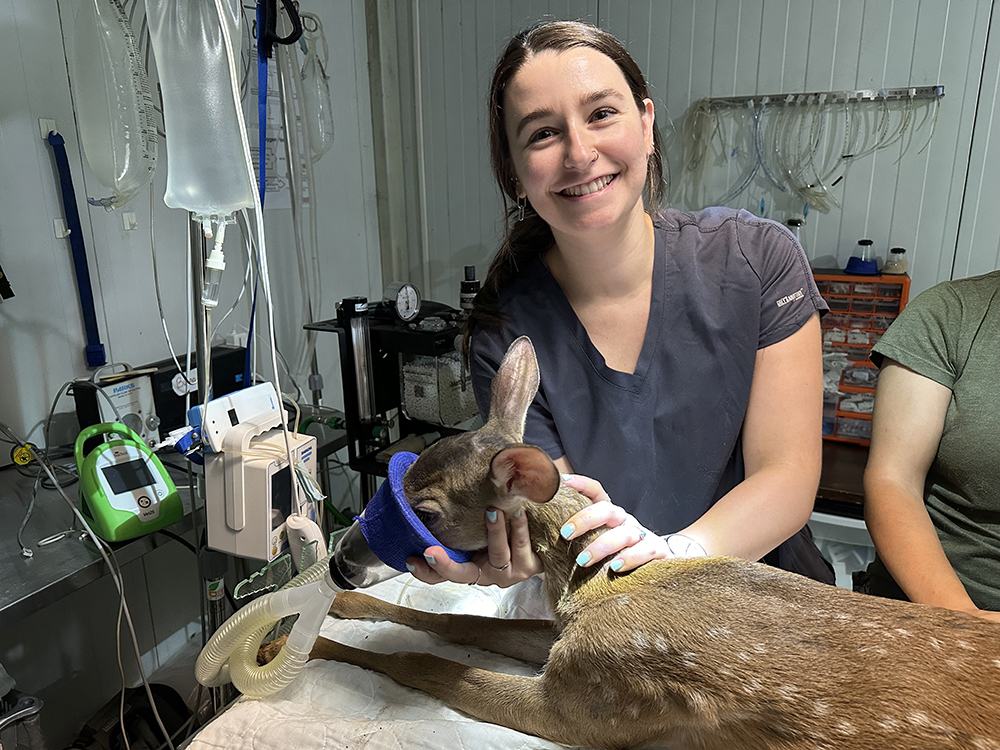Julianna Johnson - Costa Rica
This summer I had the privilege of participating in a wildlife veterinary internship at Rescate Wildlife Rescue Center in Alajuela, Costa Rica. This facility acts as a rescue and rehabilitation center, as well as a sanctuary to over 800 animals that are unreleasable. As an intern, I had the opportunity to work with 3 amazing veterinarians at this facility who allowed us to be involved with daily treatments, physical exams, diagnostics, and procedures on the animals.
Our days commonly consisted of performing health checks on animals in the sanctuary or ones that were brought in by the community, the government, or partnering organizations from around Costa Rica. Nearly every day we were working on a new species such as sloths, parrots, Howler monkeys, and porcupines. The doctors continually challenged our knowledge and let us be active participants in treatments and diagnostic interpretation which was great practice of what I had learned throughout my first year of school and through prior clinical experience. They very patiently taught us how to handle, do exams, perform blood draws, interpret blood work, and more. The sanctuary had several resources available to us to learn about the species we were working with and explore topics of interest in advance to anesthetic procedures so we were prepared. This was an extremely supportive learning environment with other interns that all had various levels of experience, so it was a great way to teach and learn from others about how veterinary medicine is done throughout the world.


During my 3 weeks in the internship, there were a few emergency cases that were brought in that were quite exciting, such as electrocuted Howler monkeys and an opossum that had been shot. It was amazing to watch the collaboration of the doctors and get some insight into the decision-making process when it comes to wildlife care. The sanctuary was dedicated to caring for any animal that came through the door, even if it meant that they would need to make room in the sanctuary to care for them for life, but they were also extremely reasonable about considering their quality of life whether in or out of the sanctuary. I learned so much, and it was an amazing process to witness and be involved in.
The most rewarding aspect of the trip was that I got to see animals throughout several stages of rehabilitation and some animals all the way through their release (like the opossum that was shot and received an enucleation pictured here). They have an expansive facility to house wildlife throughout their rehabilitation process and allow them to get acclimated back to life in the wild, along with gradual stages and tests to ensure the wild is the best option for each individual. I was amazed by how thoughtful and resourceful this rescue was in all of the work that they did.



Aside from working in the clinic, this internship allowed ample time to explore the country along with the other interns working at the sanctuary or enjoy time with them through movie, pool, and game nights. The intern coordinators assisted in facilitating trips for us to sightsee and participate in various activities - some of which included hiking volcanoes, snorkeling, and visiting hot springs. This was a great way to meet interns from all around the world, and experience more of the locals.
This was an extremely memorable trip. It was my first look into wildlife medicine, and I could not be more grateful to the veterinarians there that were so eager to teach and share their time with us. I want to give a huge thank you to Drs. Sara, Sofia, and Isa. I feel so lucky that I had the opportunity to work with you all. Pura Vida!
